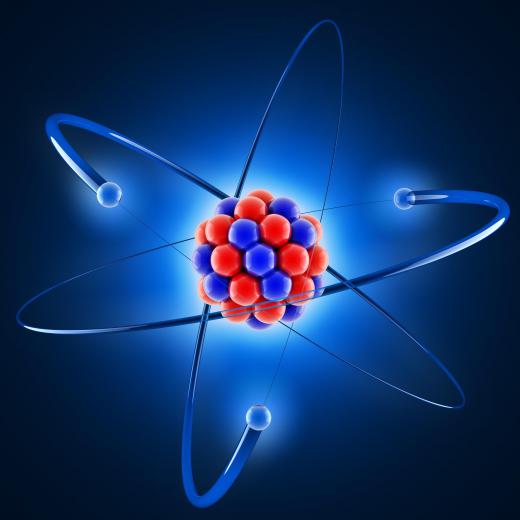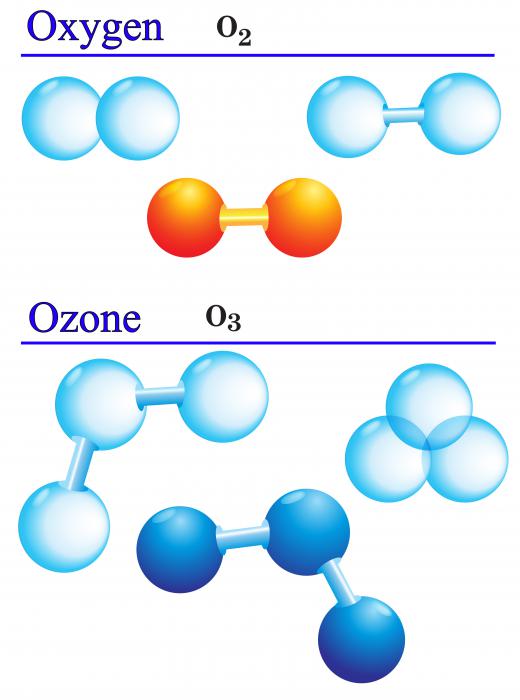What Is Ionized Air?
Ionized air is air in which the oxygen content has been given an electrical charge where it either has a negative charge due to the presence of one or more extra electrons per oxygen molecule, or a positive charge due to the presence of less than the normal number of electrons per molecule. Most air purification systems that claim to ionize the air are imparting a negative charge to oxygen molecules. This allows the molecules to act as natural attractors for dust particles and pollutants in the air and serve as a form of general cleanser for enclosed environments. Ionized air is also more prominent in nature after a rain and lightning storm, which explains why the sky often appears brighter and clearer after a storm has passed than is normal on a dry, sunny day.
The idea behind using ionization to purify the air is generally credited to Alexander Chizhevsky, a 20th century Russian scientist who founded a field of study known as aero-ionization to research the effects of ionized air on living things. In his early twenties, he invented the first version of an air ionizing system known as the Chizhevsky Chandelier. The Chandelier was initially built in 1918, and was a device that converted static electricity present in the air into usable electricity in the range of around 40 volts. Also known as the Chizhevsky ES-DC Generator or electrostatic-direct current generator, it was capable of generating higher levels of power, and, in the process, also ionized the air around it.

Some controversy exists about the safety and value of ionized air systems, because, in the process of charging oxygen molecules, small levels of ozone are also produced. The presence of ozone in the air, which is a triple-bonded oxygen molecule of O3, can be dangerous as it is a powerful oxidizing agent. Ozone is known to kill off bacteria and germs in the air, but, at the same levels, it is considered a toxic gas for human exposure. Daily averages above 0.1 parts per million (ppm) or 0.2 mg/m3 are known to be harmful to the human respiratory and smell-sensing systems of the body.

Tests of typical air purifier systems in 2005 found that many of them produced ozone concentrations of from 26 up to 300 parts per billion (ppb) within a volume of space up to two inches (5.08 centimeters) out from the machines. These concentrations could be harmful to individuals with frail health who place such devices by their bedsides or reading tables and have a continual, close exposure to them while they operate. The Environmental Protection Agency (EPA) in the United States has rated ozone exposure levels as dangerous if above 80 ppb over the course of eight hours.

Ionized air is also not inherently capable of bonding to all types of molecules, and tests have shown that airborne allergens like pollen, indoor dust, pet dander, and smoke are not effectively removed by such devices since a negative ion of oxygen will not circulate and attach to them for various reasons. This is a significant limitation of the devices, due to the fact that they are often purchased by people who suffer from asthma and allergies in the hope that such technology will alleviate their symptoms. Despite these limitations, as of 2005 in the US, ionized air systems made up 25% of all sales for air cleaning technology that people purchased to purify the air in their homes.
AS FEATURED ON:
AS FEATURED ON:















Discussion Comments
@Soulfox -- even that is a hard question to answer. All I know is I have two of those tower fans that have run all summer long for about three years so as to help air circulate and take some pressure off our air conditioner. Our health hasn't improved at my house, but we haven't suffered, either.
But, again, experts even disagree on that. The little blue light on our fans that pops on when the ionizer is engaged sure is pretty, though.
Ah, good old ionization. Kind of like magnetism was in the 19th century in that some people will claim it will cure up anything. The research on whether ionization is positive or not is hotly debated. Some people claim it cleans the air immediately around the device, some say it works wonders in a home while others just aren't sure.
All I know is that a lot of tower fans are sold with an ionization switch on them. The only question, then, is whether leaving a fan running with one of those on is actually harmful?
Post your comments